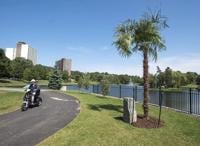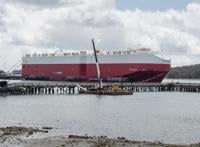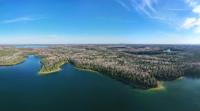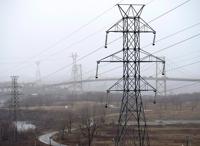HALIFAX - An unlikely experiment undertaken six years ago to see if palm trees could survive the fickle weather of Halifax came to an end this spring when the last two surviving trees failed to bloom.
The city initially planted nine trees in four parks on the Dartmouth side of Halifax Harbour in 2018, choosing varieties known to grow in more northerly climates of Asia, such as Japan and China, or in high-altitude areas such as northern India.
The trees included windmill and miniature Chusan palm, which are native to parts of Asia, needle palm from the southern United States and pindo palm, native to South America.
“Our winters proved to be a little too challenging for them,” said municipal spokesperson Ryan Nearing. “There was a little success, with some of them at least surviving a few winters.”
Five trees died by the end of winter 2021-22 despite the various methods used to try and protect them, Nearing said.
“That included surrounding the trunk with mesh or with wooden boxes,” he said. “Some of the leaves were taken off of the trees and were re-potted inside in greenhouses during the winter to see if maybe that would help preserve them a little bit more.”
Two trees died early on in the experiment and were subsequently replaced, although those trees didn't survive either. The last of the trees — two windmill palms — were declared dead in April.
And while there are no plans for a similar experiment in the future, Nearing said the city continues to look for ways to introduce biodiversity into its green spaces.
“There are no plans for palm trees specifically, but our municipal gardeners at our greenhouses are always exploring potential new plants, new species that could be introduced,” he said, adding that the park spots that were chosen to grow the palm trees are now home to heartier tree species capable of surviving the winter.
Halifax has had varying degrees of success with exotic species such as coffee and pineapple plants. During the summer of 2018 an agave managed to briefly bloom in the city’s renowned Public Gardens, where it had been transplanted after being nurtured in a municipal greenhouse.
Meanwhile, palms have been successfully grown in Vancouver, where average temperatures are milder than in Atlantic Canada’s largest city.
Lord Abbey, an associate professor of horticulture at Dalhousie University who is based in Truro, N.S., said that although the Halifax palm tree experiment was “a good idea,” he’s not surprised by the outcome.
“Some (palms) can survive temperatures as low as -10 C, but it’s harder in a climate like Nova Scotia’s where temperatures can fall to much colder levels and where there is much fluctuation in temperature,” Abbey said.
There are zonal classifications for plant hardiness, and Abbey said palm trees can survive in zones seven to 11, while the zone that includes Halifax is classified as six.
Previous experiments have shown that tropical plants and trees can be grown in northern climates but doing so is difficult and requires the assistance of greenhouses.
“It’s worth trying, but it has to be done under research conditions," Abbey said.
This report by ·¬ÇŃÉçÇř was first published June 10, 2024.








































